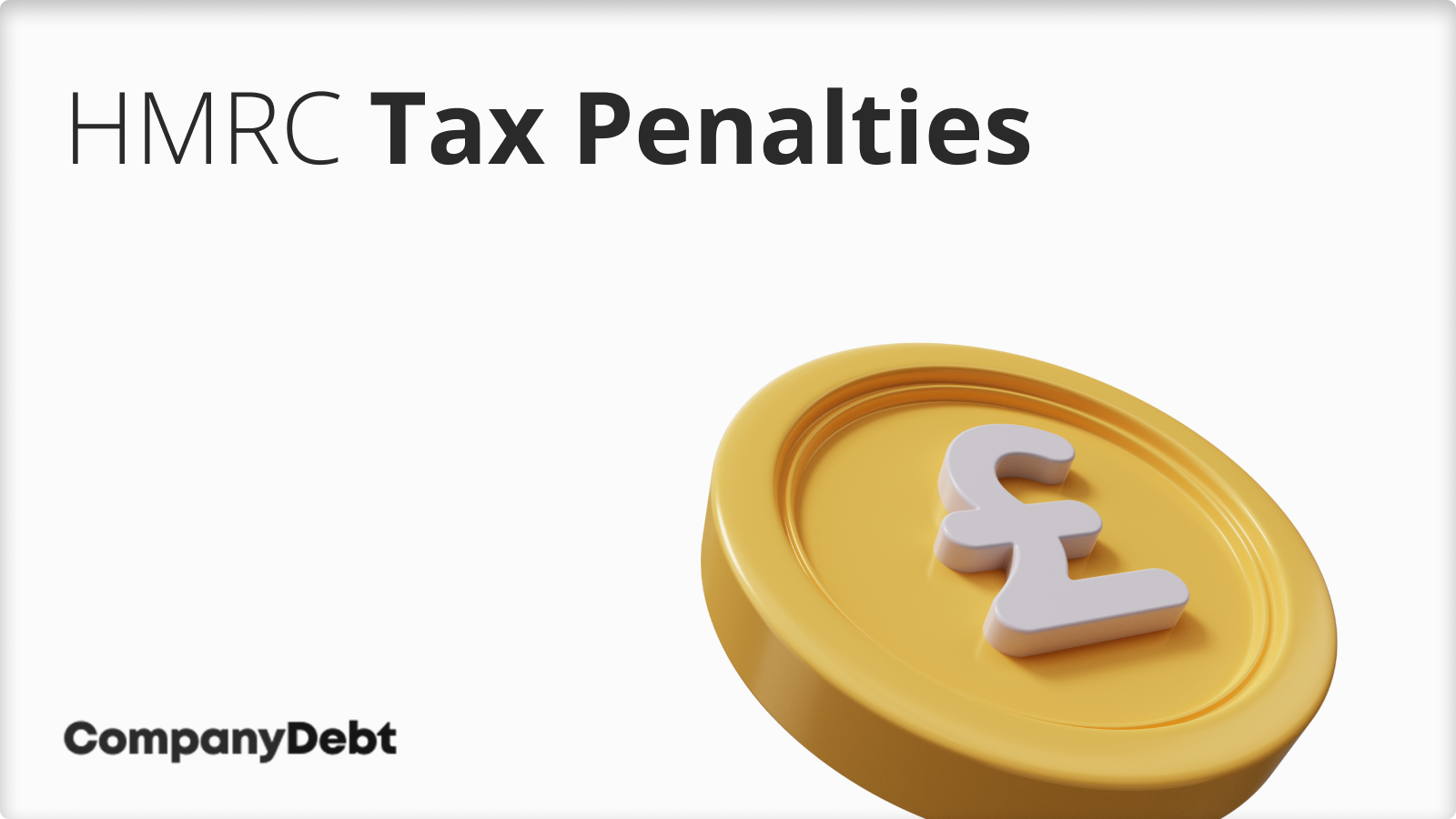
HMRC Tax Penalties
Comprehensive guide on how to calculate HMRC Tax Penalties and avoid them as much as possible.

What are HMRC Tax Penalties?
Her Majesty’s Revenue and Customs (HMRC) issues tax penalties to enforce compliance with tax laws in the UK. These penalties are imposed on individuals and businesses that fail to meet their tax obligations, whether due to late filing, late payment, or errors in their tax returns.
🛈 Key Reasons for Receiving a Tax Penalty
Tax penalties are usually received for non-compliance with deadlines and inaccurate reporting. Failing to file a tax return by the due date or not paying the due tax within the stipulated timeframe triggers automatic penalties.
Inaccuracies in tax returns that understate tax liabilities can also lead to severe fines, especially if HMRC believes the errors are due to carelessness or deliberate fraud.
What are the Different Types of Tax Penalties?
Late Submission Penalties
A late submission penalty is imposed when a tax return is not filed by the due date. The penalty structure includes an initial fine, followed by additional charges the longer the return remains unfiled.
This includes a £100 immediate penalty[1]Trusted Source – GOV.UK – HMRC Late Submission Penalty for missing the deadline, increasing incrementally if the delay continues beyond three months.
Late Payment Penalties
Penalties for late payments go up immediately after the due date for the tax. Initial penalties start at 5% of the unpaid tax and can increase with continued non-payment.
Errors and Deliberate Misreporting
Penalties for inaccuracies depend on whether HMRC views the errors as careless or deliberate. Deliberate misreporting attracts significantly higher penalties, potentially up to 100% of the tax due, as opposed to lesser penalties for simple mistakes.
How to Calculate Your Tax Penalty?
The calculation of penalties includes the amount of tax unpaid, the reason for the non-compliance, and the taxpayer’s history. The Finance Act 2007 provides guidelines on how penalties are to be applied, emphasizing the importance of taxpayer intent and behaviour.
🛈 Examples of Penalty Calculations
For instance, a taxpayer who is 30 days late on a £2,000 tax bill might pay an initial 5% penalty of £100, plus interest. If non-payment continues, further penalties can be assessed at six months and 12 months, potentially doubling the original tax bill.
How to Avoid and Reduce Penalties
To avoid penalties, ensure that all tax returns are completed and submitted before the deadline. Setting reminders for tax deadlines, using tax preparation software, or consulting with a tax professional can help you maintain compliance.
🛈 How to Appeal Against a Penalty
If you believe a penalty is unjustified, you can appeal to HMRC by providing evidence to support your case, such as demonstrating reasonable care taken or explaining unavoidable delays. The Tax Tribunals can review your case if HMRC maintains its decision after an appeal.
What are the Legal Implications of Non-Compliance?
Ignoring HMRC penalties can result in escalated actions, including court cases and additional legal fees. Severe cases may lead to criminal prosecution under the Taxes Management Act 1970.
Legal Recourse for Disputed Penalties
Taxpayers have legal rights to challenge penalties. Engaging with a tax lawyer or seeking mediation are viable approaches to contesting HMRC decisions.
Future Changes to Penalty Regulations
HMRC periodically updates its penalty policies to streamline enforcement and encourage compliance. Keep up to date with these changes as often as possible: it is essential to avoid new pitfalls and to take advantage of any new measures.
How These Changes Affect You
Staying informed about changes in tax penalty regulations will allow your business to adjust its tax practices accordingly, potentially reducing your risk of penalties and improving your compliance strategies.
FAQs
Can HMRC waive penalties for first-time offences?
Yes, HMRC may offer relief from penalties for first-time offenders if the taxpayer can demonstrate that they made an honest mistake or encountered unforeseen circumstances that prevented timely compliance. It’s advisable to contact HMRC directly to discuss specific circumstances and possible waiver options.
What happens if I realize I’ve made a mistake on my tax return after submitting it?
If you discover an error on your tax return after submission, you should correct it as soon as possible by filing an amended return. Prompt action can help reduce potential penalties, especially if you rectify the mistake before HMRC begins an investigation.
Are there any penalties for failing to notify HMRC about a source of income?
Yes, failing to notify HMRC about a new or additional source of income can lead to penalties, especially if the omission results in unpaid taxes. The penalty amount will depend on whether HMRC believes the failure was due to carelessness, deliberate concealment, or a genuine mistake.
How long does HMRC take to respond to appeals against penalties?
The time HMRC takes to respond to an appeal can vary, but typically it takes from a few weeks to several months, depending on the complexity of the case and the backlog of appeals being processed. During this period, it’s crucial to keep all correspondence and evidence organized and accessible.
Can I set up a payment plan to settle my penalties and taxes?
Yes, if you’re unable to pay your tax and penalties in full, HMRC may allow you to set up a payment plan to spread the cost over a longer period. This arrangement, known as a Time to Pay arrangement, helps manage your financial burden while staying compliant with tax obligations. However, approval is not automatic and is considered on a case-by-case basis.
The primary sources for this article are listed below, including the relevant laws and Acts which provide their legal basis.
You can learn more about our standards for producing accurate, unbiased content in our editorial policy here.
- Trusted Source – GOV.UK – HMRC Late Submission Penalty








